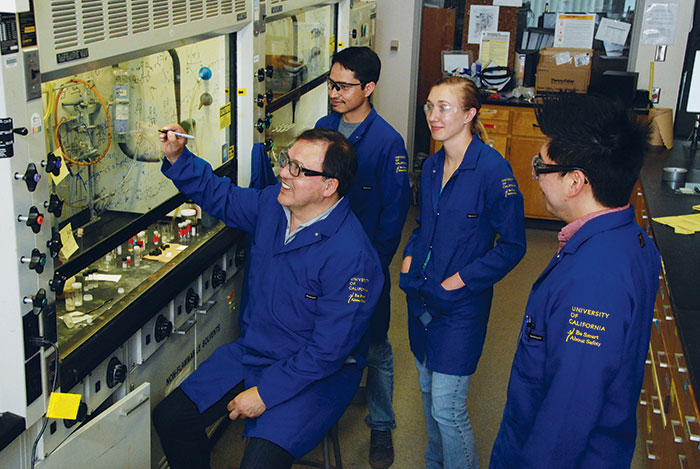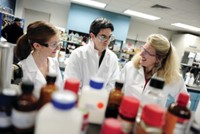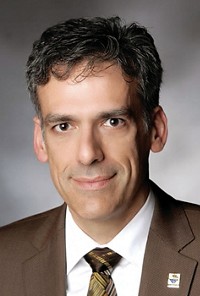Advertisement
Grab your lab coat. Let's get started
Welcome!
Welcome!
Create an account below to get 6 C&EN articles per month, receive newsletters and more - all free.
It seems this is your first time logging in online. Please enter the following information to continue.
As an ACS member you automatically get access to this site. All we need is few more details to create your reading experience.
Not you? Sign in with a different account.
Not you? Sign in with a different account.
ERROR 1
ERROR 1
ERROR 2
ERROR 2
ERROR 2
ERROR 2
ERROR 2
Password and Confirm password must match.
If you have an ACS member number, please enter it here so we can link this account to your membership. (optional)
ERROR 2
ACS values your privacy. By submitting your information, you are gaining access to C&EN and subscribing to our weekly newsletter. We use the information you provide to make your reading experience better, and we will never sell your data to third party members.
Careers
Encouraging Diversity
NSF Chemistry Division takes steps to increase presence of women and minorities in the discipline
by Susan R. Morrissey
May 7, 2007
| A version of this story appeared in
Volume 85, Issue 19

The lack of women and minorities in chemistry is a problem that has been recognized for decades. Although some gains have been made, the face of the chemical workforce still does not come close to reflecting the face of the U.S.
To help close this gap, the National Science Foundation's Chemistry Division director, Luis A. Echegoyen, has made broadening participation in chemistry a priority for the division. Under this initiative, the division released its own plan for increasing diversity and is encouraging its grantee institutions to do the same. The division is also leading efforts to organize a workshop devoted to the goal of increasing the number of underrepresented minorities in chemistry.
"We are committed to increasing the participation of women and underrepresented minorities in chemistry, because we feel it is essential to achieving the scientific goals and excellence that we need in order to maintain the U.S. competitive edge," Echegoyen says. And for Echegoyen, broadening participation starts with the Chemistry Division itself.
The division's plan, which is available online (www.nsf.gov/pubs/2007/nsf07021/nsf07021.pdf), sets an ambitious, but obtainable, goal. "In essence, the plan says that at some point in the reasonable future, we want to have the Chemistry Division, its panelists, its principal investigators, the reviewing community, and others involved in divisional activities look like the face of America," Echegoyen says.
The adoption of this plan by the Chemistry Division sets a new precedent for NSF. According to Echegoyen, it is the first time an individual division within NSF has devised its own strategic plan for broadening participation.
In addition to setting up its diversity plan, the division is taking steps to encourage academic departments to do the same by requiring that grant applications for its Chemistry Research Instrumentation & Facilities: Multi-User (CRIF:MU) program include a plan for broadening participation. CRIF:MU was selected because it's the division's only solicitation that specifically targets departments.
The requirement of a diversity plan for these grant applications is new this year and is in effect for the annual competition that closes on June 25. The plan will not be assessed as part of the proposal review but must be part of the application's supplemental material, Echegoyen points out.
"Having a department plan is important, because in my experience, most faculty are sincerely committed to the general idea but often forget about it in the heat of the hiring action," says Kendall N. Houk, a chemistry professor at the University of California, Los Angeles. "This requirement helps everyone get on board with plans and increases the probability that more minorities and women will be hired and promoted," he explains.
By requiring a departmental diversity plan, "the Chemistry Division has made a bold and significant step toward broadening participation," says Joseph S. Francisco, a professor of chemistry and of earth and atmospheric sciences at Purdue University. He tells C&EN that it "is going to set a new paradigm for the whole of NSF."
The Chemistry Division also plans to hold a workshop in collaboration with the National Institutes of Health and the Department of Energy later this year on the movement toward increasing racial and ethnic equity in chemistry. The format of the workshop is expected to be similar to that of the gender equity workshop sponsored by the division, NIH, and DOE last year (C&EN, Feb. 13, 2006, page 65).
Plans for the workshop are still being finalized, but steering committee chairmen Nicholas J. Turro of Columbia University and Isiah M. Warner of Louisiana State University tell C&EN that the focus and outcome of this workshop will be different from any previous workshop in this area.
"The Chemistry Division at NSF has been a leader and driver of changes in the attitudes and direction of chemical research in universities for decades," the cochairmen say. The workshop will follow in this tradition, they explain, by supplying attendees with key tools to truly effect change at their home institutions.
For Echegoyen, activities like this workshop and the division's diversity plan are about more than just lip service. "I want to do things that really grab on, have teeth, and lead to change," he says. "Otherwise, let's not waste our time or our money."





Join the conversation
Contact the reporter
Submit a Letter to the Editor for publication
Engage with us on Twitter